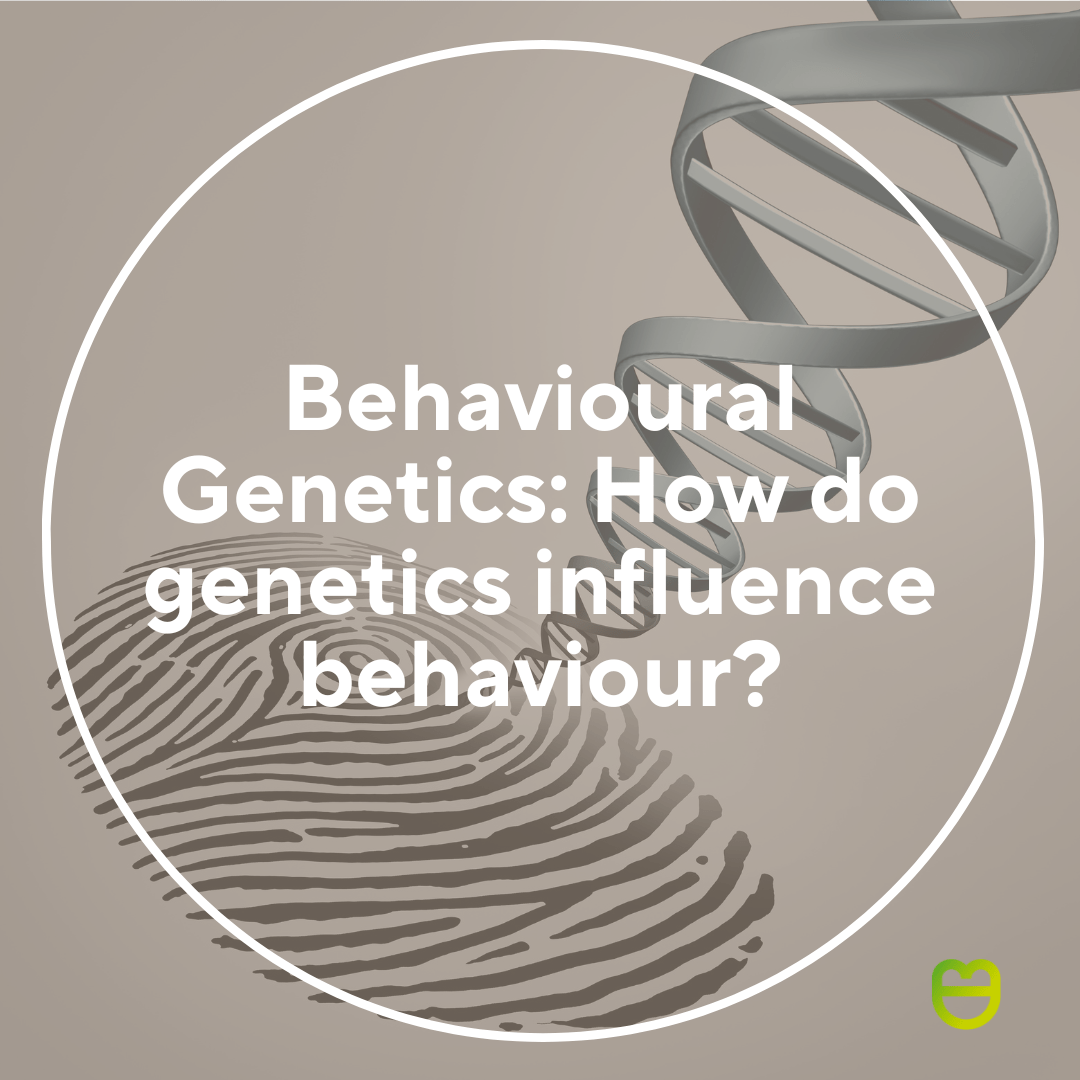Behavioural genetics, or behavioural genetics, is the science of how genetics affects our behaviour and the development of psychological traits such as personality.
Behavioural genetics tries to answer the question of how genes interact with the environment to influence people’s behaviour. To do this, scientists working in behavioural genetics set up experiments in which they can study which specific genes are involved in which traits or behaviours and what their mechanism of action is.
The origin of behavioural genetics
As early as the 1960s, several studies of twins showed that genetics was related to certain intellectual abilities and some psychiatric pathologies such as schizophrenia. These studies involved twins who were genetically identical, but who had been given up for adoption and raised in different families, so that the environmental factors to which they were exposed and the upbringing they received were different. This suggested that the patterns found could not only be due to the environment, but that there were related genetic causes.
Later, in the 1980s, behavioural genetics was established as a scientific discipline, and the scientific community supported the importance of the study of heredity as a factor involved in different psychological and behavioural traits.
Nowadays, behavioural genetics is a booming scientific field because in recent years the cost of DNA sequencing has been greatly reduced, which has allowed more and more research groups to carry out studies in which the genes responsible for certain behaviours and psychological traits are identified.
But to properly understand behavioural genetics and how DNA modulates our behaviour, it is first necessary to review certain fundamental concepts.
What is DNA?
DNA is an instruction manual for our body, telling the cells in our body how they should function, how they should replicate and which proteins should be created in order for everything to work properly. It is a book with more than 300,000,000 pairs of letters that tell our body in a complex way how to carry out its functions.
DNA is stored as a strand inside the nucleus of cells (yes, every cell in our body contains all the DNA, all the genetic material necessary for our body to perform its functions). A set of these letters is what we call a gene. Genes are specific regions of DNA that perform or carry out important functions. It is necessary to understand that not all DNA comes to perform a known function; there are parts called introns and other parts called exons. Introns are not expressed while exons are. Thus, a gene can contain both intronic and exonic regions (in fact, this is almost always the case). This strand of DNA in the nucleus is not spread out and free, but is super-compacted and forms the famous chromosomes. Each cell in our body contains 22 pairs of chromosomes, except for germ cells (eggs and sperm) which contain 23, adding one more chromosome pair, the sex chromosome pair (XX for females and XY for males).
How DNA works
Now that we know what DNA is and how it is found in our bodies, we need to understand (roughly) how it works. In 1958, the central tenet of molecular biology was born, an idea that evolved over the following years and was consolidated several decades later. Basically, this central tenet explains how DNA works.
The main function of DNA is to function as a template for RNA, which will then reach the ribosomes and create a protein.
DNA is not a «consumable» you might say, it is not a disposable object, so a copy of it needs to be made before it can be used. In essence, DNA is a kind of biscuit mould, into which we pour the filling to obtain the desired end product, the gingerbread man-shaped biscuit (it’s actually more complex than that, but it’s a good simile to simplify the complex process).
At the end of the process, the DNA ends up producing proteins with specific functions in the body, and altering them in one way or another produces alterations in those functions. Either so that a function is over-performed (as in the case of cancer, an abnormal replication of cells) or under-performed (as in neurodegenerative diseases).
La genética conductual: Interacción genética y ambiente
In the case of diseases such as breast cancer or cystic fibrosis, the role of genetics is clear and widely studied, indeed, in both cases a diagnosis can be made on the basis of a genetic sample. In these situations, society has a clear idea of how genetics can influence our state of health. However, when we talk about mental health and behavioural genetics the idea becomes somewhat blurred.
Our behaviour, in the same way as our physical health, is altered and influenced by genetics (NOTE: influenced NOT determined). For example, there are certain genetic alterations that produce an overexpression of dopamine, a fundamental neurotransmitter for our brain. Among other functions, dopamine fulfils a behavioural reinforcement function when it impacts on certain areas of our brain. In other words, if there is an overexpression of dopamine, we could say that a person is more sensitive to behavioural reinforcement. An example of this can be found in addictive behaviour, where the dopaminergic system plays a key role. However, this does not mean that behavioural genetics understands behaviour as a product of 100% genetics, but that there is a very important interaction with the environment. It is the environment that, in interaction with genetics, modulates our behaviour.
In the case of psychological variables such as stress, anxiety, depression, well-being… we find that their genetic influence on our behaviour is determined by a very large set of small genetic variations of low effect, since these are so-called polygenic traits. In other words, just as in some types of breast and ovarian cancer there is a gene with a high involvement in the appearance (BRCA), in the case of anxiety we have multiple genetic variants (more than 200) which individually explain very little, but which together constitute an important factor in the development of our behaviour.
How can knowing my genetics help me?
The main aim of behavioural genetics is to understand how certain genes interact with the environment, and how this interaction increases or decreases the likelihood of developing certain behaviours, psychological traits or mental disorders. These advances in science have allowed scientists to develop tools that give us the opportunity to learn about our genetics in a relatively simple way.
Benefits of knowing your behavioural genetics:
1. It gives us information about ourselves that we cannot obtain in any other way.
2. It allows greater self-knowledge about our vulnerabilities and strengths on a biological and organic level.
3. It can help to establish guidelines for psychological action in a more personalised way by specialised psychologists. As well as greater psychological self-knowledge.



